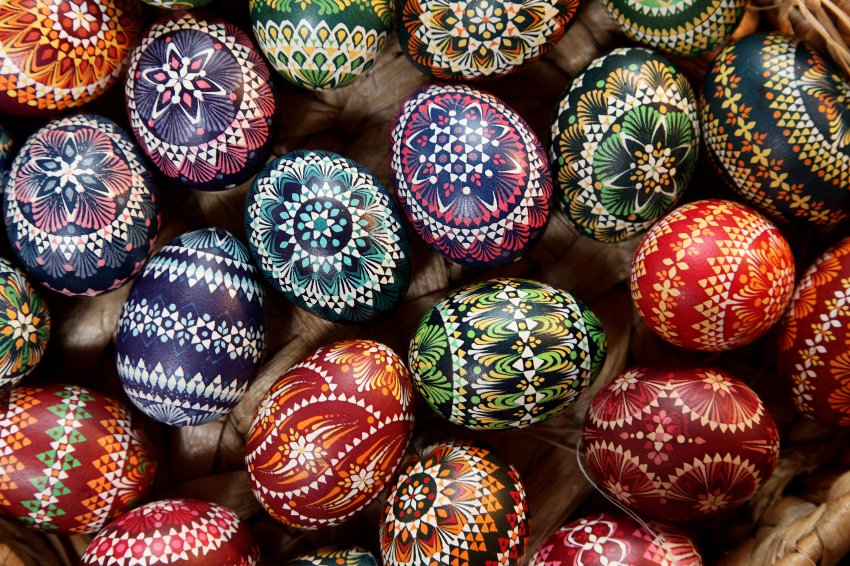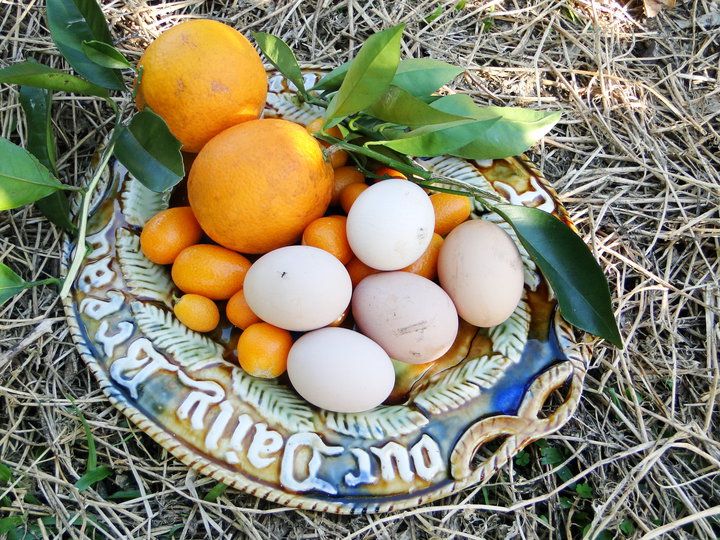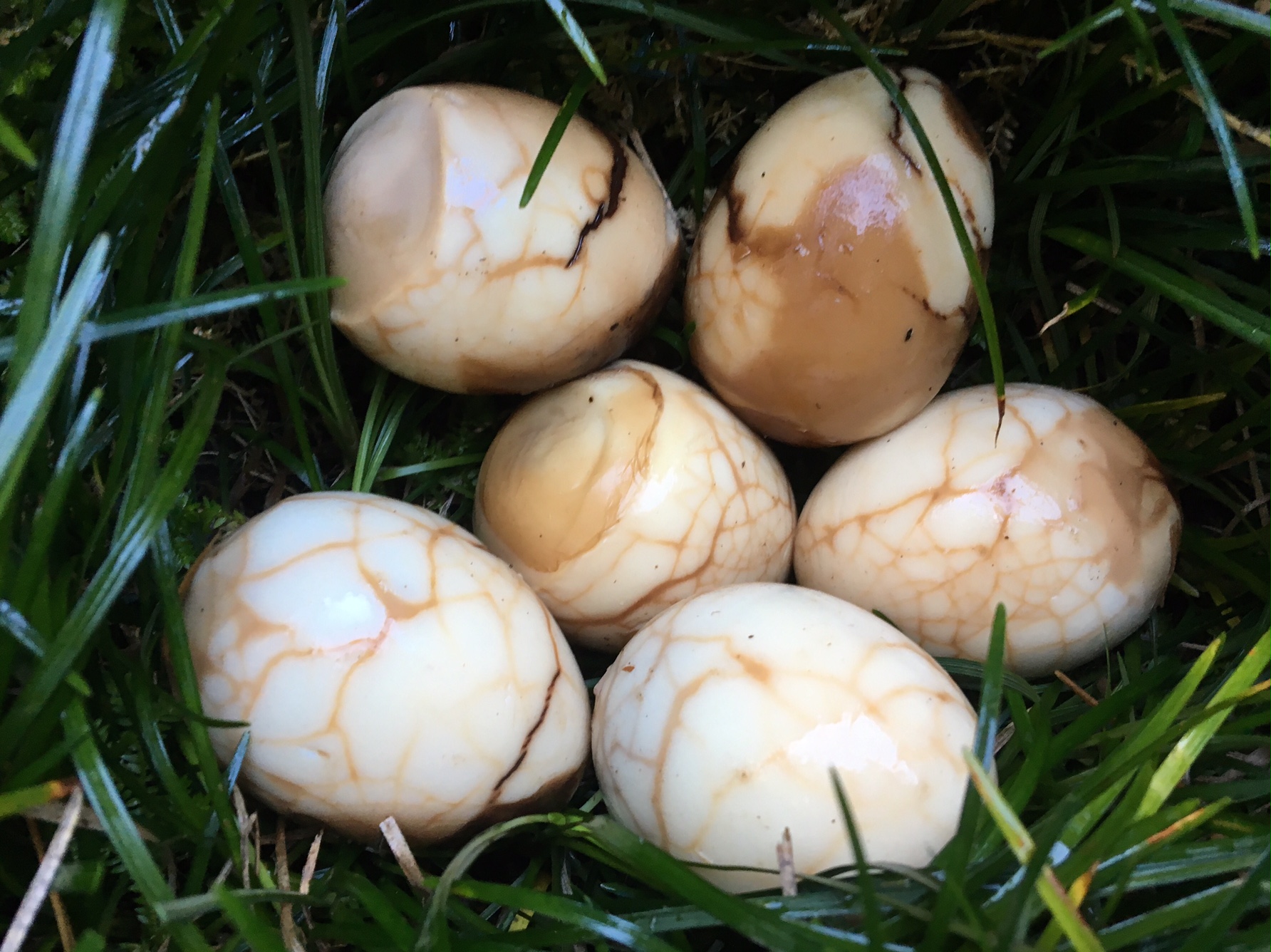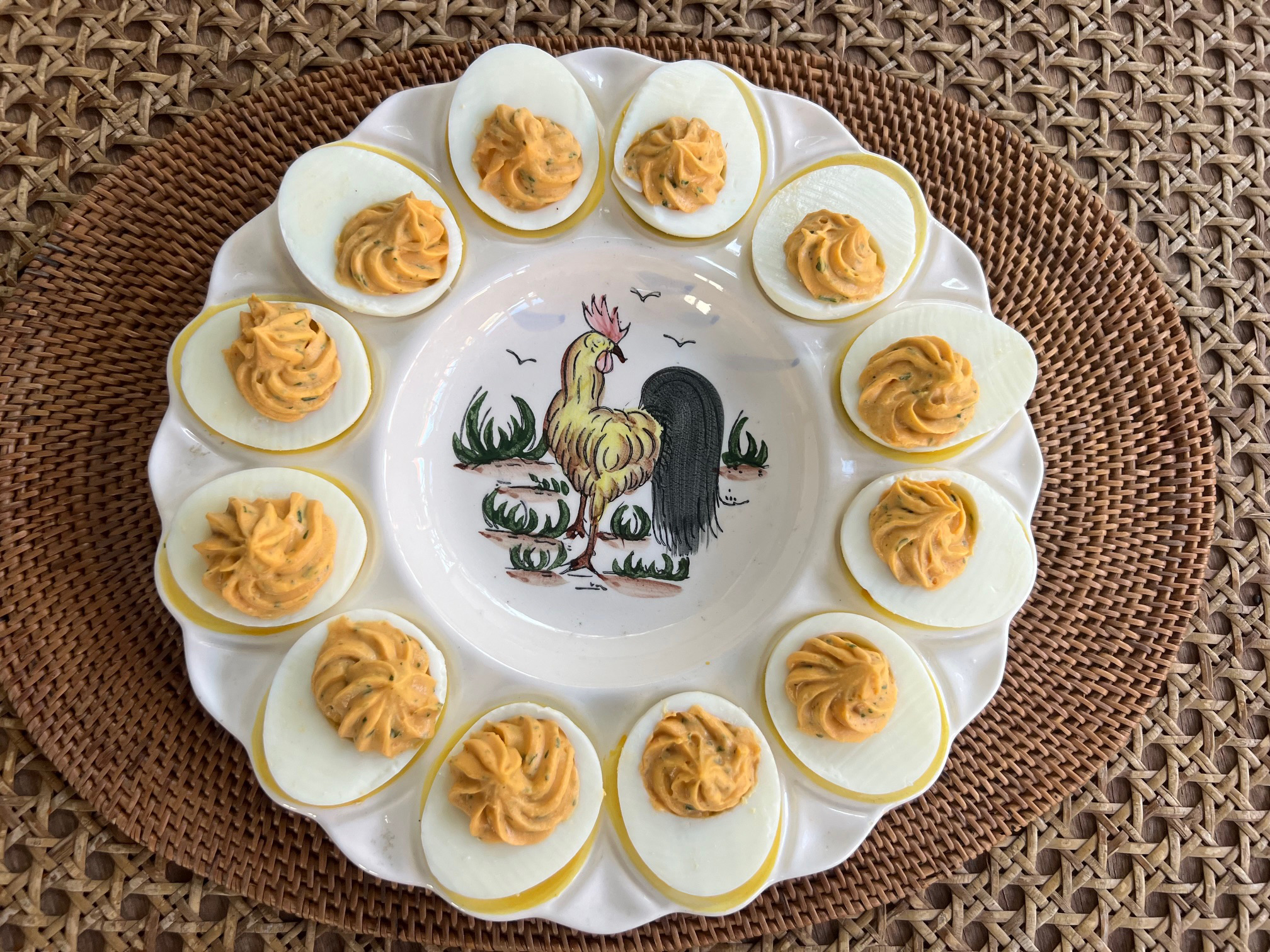What the Devil?
Ever wondered why we celebrate Easter with eggs? Curious, isn’t it, especially when you discover that it’s not even a Christian tradition.
The very word Easter derives its name from Eostre, or Eostrae, the Anglo-Saxon goddess of spring and from the old high German word Eostarum.
Eostre is usually associated with themes of fertility, renewal, and seasonal changes, as her name is linked to words related to dawn and the east. She is often depicted with symbols of spring, such as eggs and hares which signify the return of life after winter and carry the Christian association of the resurrection of Christ.

Hand-painted Easter eggs
So when we exchange Easter eggs, we re-enact an ancient wisdom: that which appears to be still and dead in fact contains new life.
Eggs have had a fairly poor press over recent decades due to cholesterol and salmonella scares yet they are an excellent source of protein and minerals and contain every vitamin except C, providing all the necessary nutrients for a growing chick.
You’d be hard put to find those in the chocolate versions!
A large egg contains about 6kg fat and 315Kj. A single yolk contains about 210mg of cholesterol but this relatively high content is only of concern to people with already raised blood cholesterol levels.
According to the Australian National Heart Foundation, an egg a day is acceptable if your cholesterol is not elevated.

Citrus fruits and fresh farm eggs, Bend of the River
Where would cooks and chefs be without eggs? Of all the foods required in a kitchen, they must be just about the top of the list, unless of course you’re vegan. Chickpea water (aka aquafaba) is all very well but it’s hard to beat the nutritional profile of an egg.
Apart from their nutritiousness and incredible versatility, eggs are prized for two very important qualitites: their ability to form a light delicate foam (think meringues, mousses, souffles, sponges) and their ability to bind other liquids into a moist, tender solid (cakes, custards, quiches).
Boiled, baked, scrambled, poached or fried: these are just some of the basic ways to cook them. Stretch the imagination a little and think frittatas, tortillas, sauces (such as hollandaise, benedict, mayonnaise), stuffed eggs, pickled eggs, marble eggs, egg flips and eggnogs.

Marble tea eggs
And then there are devilled eggs, those spicy little canapes popular in the 1950s.
According to The History Channel, devilled eggs go all the way back to ancient Rome where eggs were boiled, seasoned with spicy sauces and served at the beginning of meals.
One of the earliest known recipes for devilled eggs appeared during the 13th century in the southern Andalusian regions of Spain. A cookbook from this era suggested grinding boiled egg yolks with coriander, onion juice, pepper and fermented fish sauce. Similar recipes were widely available across much of Medieval Europe by the 15th century.
But it wasn’t until the late 19th century that recipes for devilled eggs began to resemble what we call devilled eggs today.
According to Wikipedia, “the first known recipe to use mayonnaise as an ingredient in devilled eggs was in the 1896 version of an American cookbook titled The Boston Cooking School Cookbook by Fannie Farmer. In this early recipe, the mayonnaise was recommended as a binding agent for the yolk mixture.”

Devilled Eggs
So this Easter, how will you prepare your eggs?
Give me a soft boiled egg any day with the golden yolk still runny enough to dip crisp fingers of toast into. I’m pretty partial to a good omelette too (made with whole eggs) but I do like it soft and creamy inside, not dry and overcooked.
If you’re worried about cholesterol and Kj, an all-white omelette is the way to go. I first tasted one of these at the Peninsula Hotel in New York. A sous chef stood behind the buffet table, set up for Sunday brunch, whisking together the egg whites with a handful or two of freshly chopped herbs (basil, dill, parsley, chives) . This mixture was tipped into a lightly oiled teflon pan and the omelette was filled with a moist filling of diced tomatoes, sliced green onions and roasted red capsicum.
Though it’s not so much the way they’re cooked which concerns me, it’s trying to decide which eggs to buy and how much to spend. Free-range, organic free-range, pasture-raised, barn laid, 4GRAIN, omega-3, Veggs (vegetarian fed hens)? I’m told battery hens won’t lay unless they’re happy but I usually avoid these because free-range eggs taste better and I don’t like the thought of all those poor hens cooped up in cages.

Fresh farm eggs, just laid
Mind you, you can’t even be sure about fresh farm eggs (unless your hens lay in the one spot) because it’s hard to tell how old they are if they lay all over the farm. I remember finding a nest of brown eggs in a most unexpected place at the family farm and not having any idea how long they’d been there.
A thick white is a good indicator of freshness whereas a vivid yellow yolk just means the chooks have eaten a lot of greens. You could try the water test: put an egg in a glass of water. A fresh one will generally stay at the bottom whereas a stale one will float because a large pocket of air forms in the base.
And remember: always treat eggs with TLC. Cook them over low to medium heat – otherwise their protein toughens and they will turn rubbery, not the best way to start any day!

Thank you Sheridan